You've gotten a couple very good answers on typical behavior. Here are some (perhaps tl;dr - but you can skip to the bottom line) points.
If you're interested in designing something that is guaranteed to work, you should also look for the guaranteed numbers. As a switch, your interest would likely be in how much voltage is needed to turn it on (for a given definition of 'on') and how low the voltage has to be before it is guaranteed to be off. Those guarantees are usually specified in two different ways. The \$V_{GS(th)}\$ is more of a guarantee of where it is (mostly) 'off', specified at 250uA in the case of your MOSFET, but where \$V_{GS(th)MAX}\$ is given (Digikey's search engine) it's a usable proxy. The voltage at which \$R_{DS(on)}\$ is specified tells you what voltage the manufacturer tests it at for the 'on' condition (there may be more than one point specified). In the case of the CSD19501KCS, it is specified at 6V and 10V.
The graphs are only a guideline, whereas the limits on \$V_{GS(th)}\$ and \$R_{DS(on)}\$ (not the typical numbers) are guarantees (at specific temperatures).
You can use the graphs to interpolate and estimate what the limits might be at other conditions, but in general you should not depend on the typical numbers or the typical graphs (alone).
When you are using parametric search engines, one switch that can help detect MOSFETs suitable for lower voltage drive is "Logic Level". \$V_{GS(th)}\$ can certainly help to point you to the datasheets to scour to check the voltage(s) that \$R_{DS(on)}\$ is specified at. Searching for MOSFETs rated for very low \$BV_{DS}\$ will usually yield parts rated at low gate voltages.
Unfortunately, the opposite of the latter point is also true, it's rare to find a high-\$BV_{DS}\$ MOSFET with a "logic level" gate. In such cases you may have to generate a higher gate voltage (10V is very common for high-voltage MOSFETs). The \$R_{DS(on)}\$ of high-voltage MOSFETs also worse for high \$BV_{DS}\$ (die size being similar), so there can be a real cost to setting the specification for \$BV_{DS}\$ much higher than necessary (unlike BJTs where there is not a such a strong effect).
I took a quick look and did not see any 80V or better rated MOSFETs with 75A or better Ids that were reliably suitable for 3V drive. NXP has a number of automotive models with 5V drive, but even so they're not widely available from multiple sources, and they're aimed at the 42V automotive market, which seems a bit iffy (markets can be fickle).
Bottom line: If you cannot relax the Ids and \$BV_{DS}\$ ratings, I suggest boosting the gate voltage to 10V.



